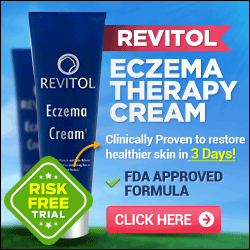Skin Care
Skin Types
Dry
Oily
Combination
Sensitive
Conditions
Eczema
Part II
Psoriasis
Rosacea
Cellulite
Aging and Wrinkles
Sun Protection
Introduction
Maximum
Factor
Tanning and Burning
Other
Babies
Women
Men
Winter and Summer
Natural Ingredients
|
Skin Disorders – Eczema Part I
  Persistent, painful itching – that's how many patients describe eczema, a skin condition with many causes. To make it easier to understand eczema and the various symptoms and related treatments, eczema goes by a number of different names. Regardless of the underlying cause however, eczema always affects the epidermis, and it can affect any individual, regardless of genetics, racial background or age. Persistent, painful itching – that's how many patients describe eczema, a skin condition with many causes. To make it easier to understand eczema and the various symptoms and related treatments, eczema goes by a number of different names. Regardless of the underlying cause however, eczema always affects the epidermis, and it can affect any individual, regardless of genetics, racial background or age.
Classified into two general, and rather broad, categories, eczema that has no apparent trigger or cause is considered endogenous eczema. When eczema is the result of external triggers such as allergens, the eczema is classified as eczematous dermatitis.
Much still is unknown about eczema and one puzzling fact is that the available treatments for the various types of eczema aren't always effective for every individual.
The primary symptoms of eczema include the appearance of itchy red rashes. Sometimes blisters develop and they may seep fluids then crust over. Affected areas often become scaly and thick and sometimes there's even discoloration. Eczema can develop on any part of the body and there is no consistency in the length of time each flare-up will last. Eczema that develops in the folds of skin tends to be more irritating because of the constant rubbing.
The most serious risk associated with eczema is infection. Eczema is so itchy that affected individuals sometimes scratch the area until the top layer of skin has been broken. With the skin's ability to provide external protection from harmful bacteria compromised, bacteria can make its way into the damaged area and cause an infection.
It's advisable to keep fingernails trimmed short to decrease the damage that can be caused by constant scratching of affected areas. When children develop eczema, parents are often advised to place soft mittens over their hands to reduce the severity of the itching.
Although it can be troublesome, eczema is not contagious.
Eczema treatment will differ based on the type that has been diagnosed. NSAIDS, which are non steroidal anti-inflammatory drugs such as ibuprofen, naproxen and others, and corticosteroids, drugs that mimic the hormones produced naturally by the adrenal glands, are often prescribed to help reduce the inflammation associated with eczema. Benzocaine can also help reduce inflammation when applied topically. In some cases, antihistamines are prescribed.
Calamine lotion is effective at soothing the affected area, helping to keep it dry and protected. Another treatment aimed to soothe is application of wet bandages. Dermatologists often suggest use of cotton clothing and bedding as this natural fiber cools skin and allows it to breathe.
Shampoos and ointments that contain coal tar additives can help patches of red, itchy skin decrease in size. Finally, eczema that is considered severe is sometimes treated with UV lights.
|

